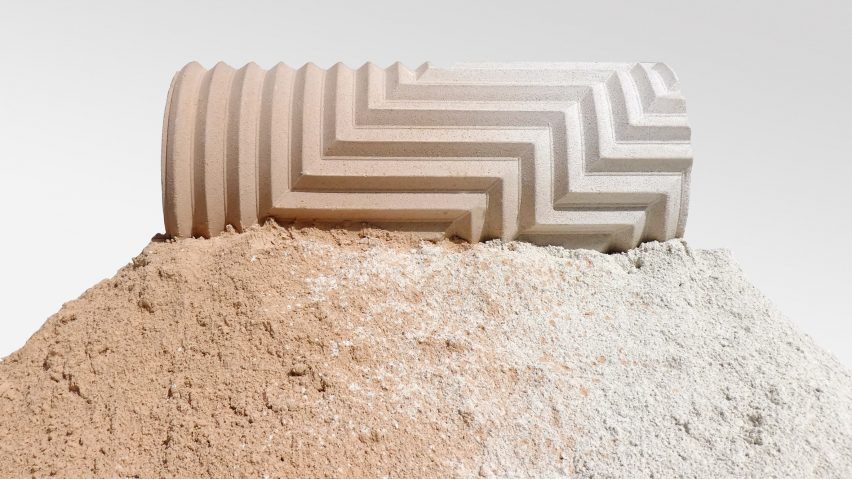
Phil Cuttance creates intricate Herringbone Stone Blend vases by hand
London designer Phil Cuttance has created a series of herringbone-patterned vases from a gradated mixture of Jesmonite and crushed rock, to achieve an ombre effect.
Each vase in the Herringbone Stone Blend collection has been made by hand using Jesmonite – a fine, water-based, composite material that shares similar qualities to cement – and stone.
The vases come in three colourways, created from three different stone blends – pink granite and bathstone, black granite and charcoal, or sandstone and terracotta.
The Jesmonite is combined with these mixtures of two types of crushed stone to create an ombre effect, with a stronger, more concentrated colour at the bottom that fades to white.
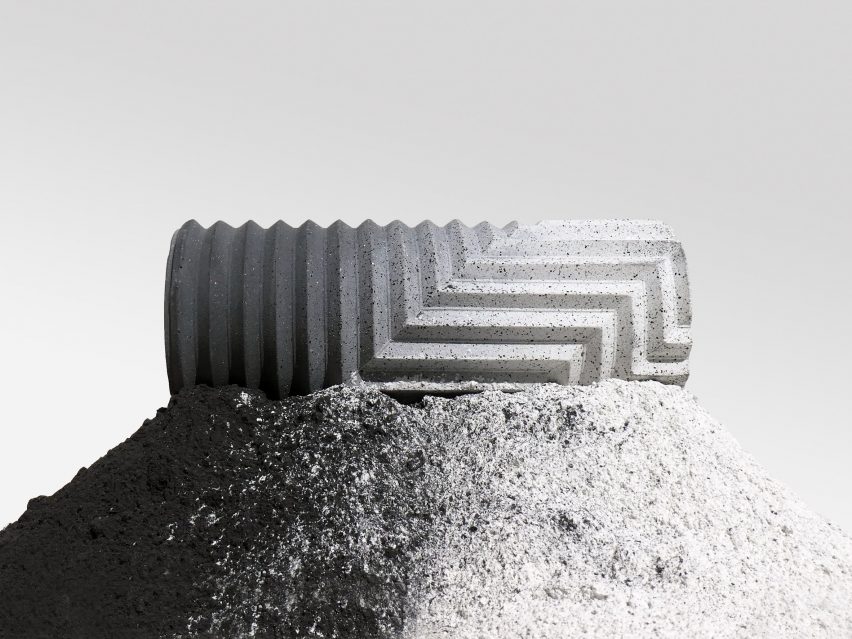
The designer welcomes any small imperfections that often happen as part of the process and can be seen upon closer inspection, seeing them as an indication of the hand-made nature of each piece.
According to Cuttance, the vases are often assumed to be made using processes such as 3D printing or CNC, but each is in fact made by hand in his London studio.
"I am interested in creating objects whose form, often detailed and visually complex, belies the hand-made, lo-fi processes by which they are created," the designer explained.
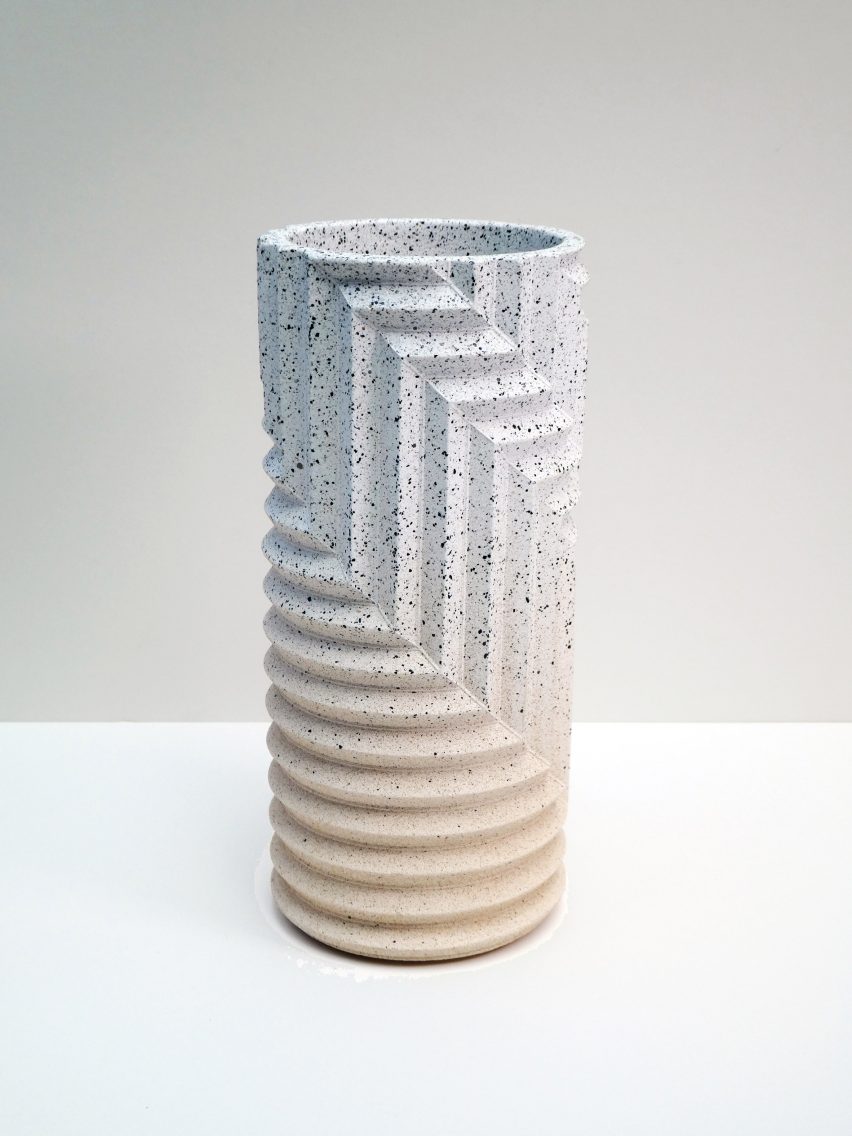
He starts by creating a custom folding-pattern, which he projects onto a flat sheet-material. This material is then folded by hand to form a 3D herringbone-shaped relief.
He then uses this relief as a flat mould that he casts resin onto, before manipulating this cast by hand to create the final 3D form that the vase will take.
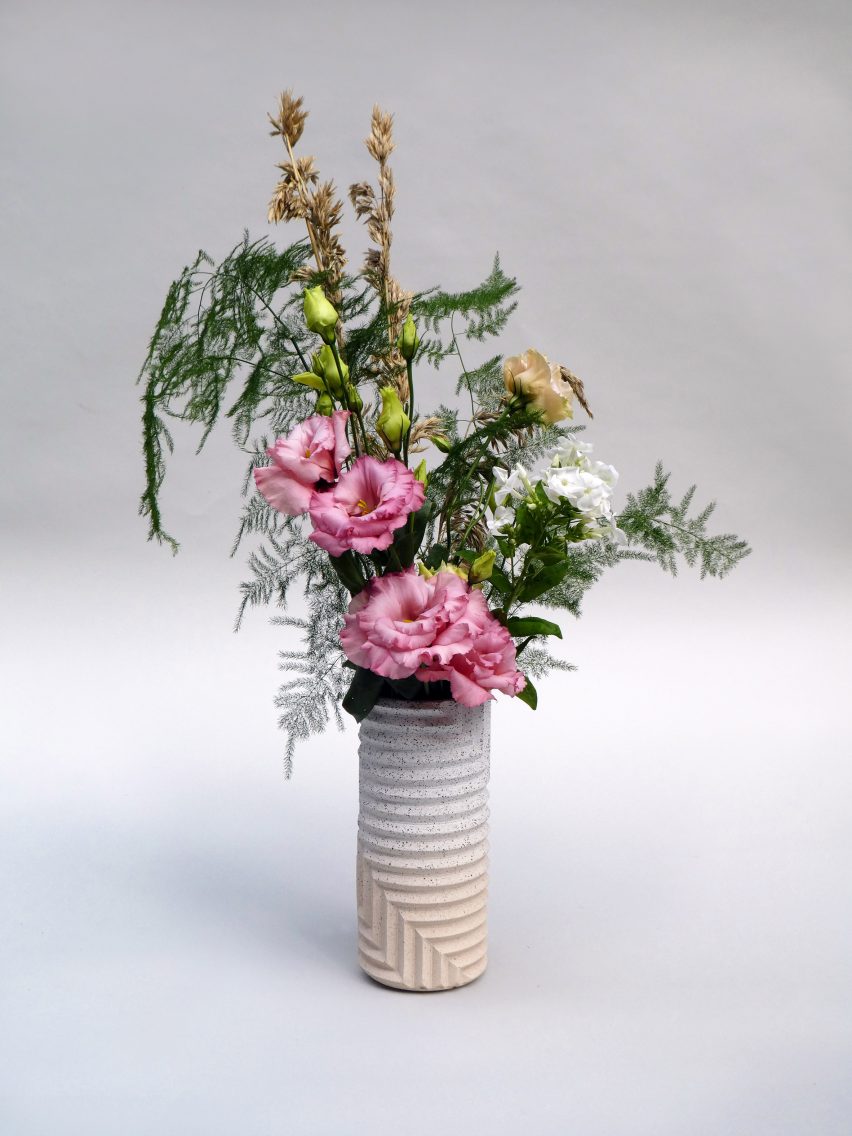
There is no pigment added to the Herringbone Stone Blend vases – each is coloured by the natural tones of its stone counterpart.
The vases are therefore available in three colours of pink granite, black granite or terracotta-hued sandstone. Each piece is unique thanks to the organic nature of the mixing process.
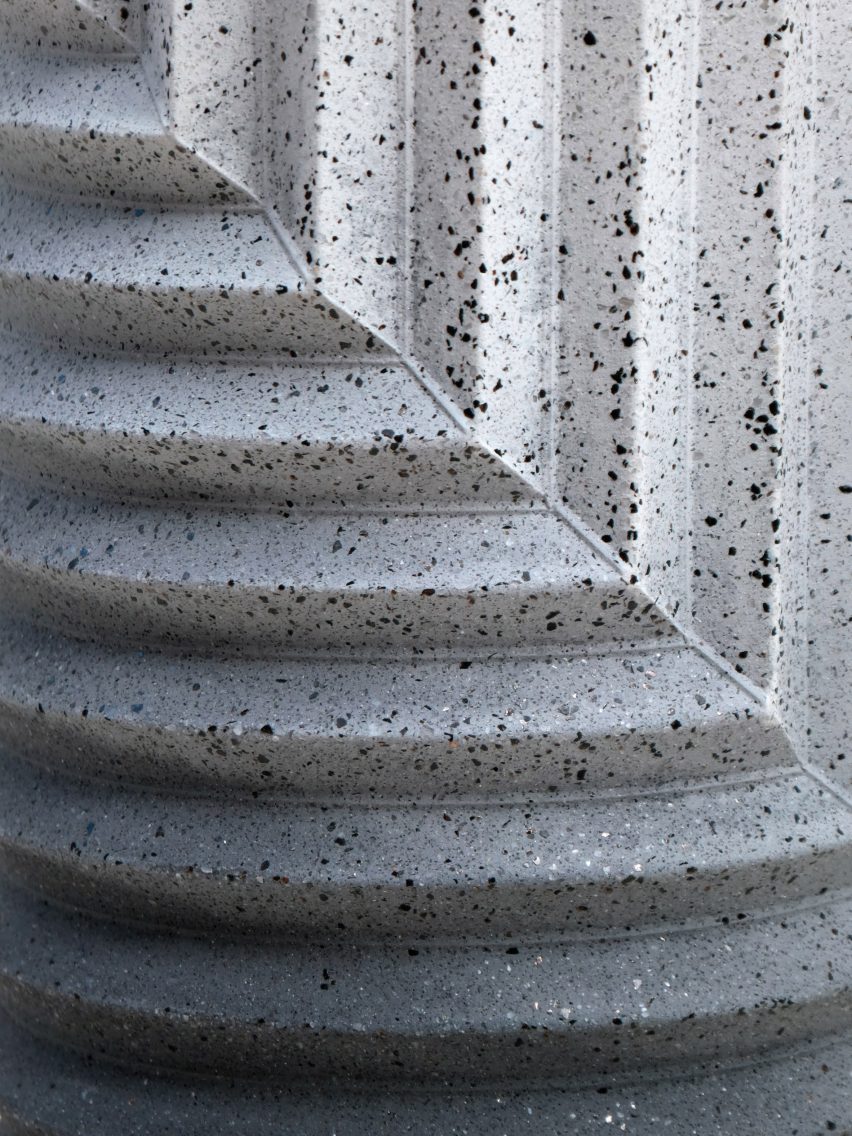
To create the ombre effect, Cuttance prepares two different mixtures of the Jesmonite composite – made up of liquid and powder.
One is left in its natural, white state, while another mixture is combined with one of the two-stone blends to achieve the colour.
The coloured mixture is then poured halfway into the folded sheet mould, and topped with the plain, white Jesmonite liquid, before being stirred to achieve the gradated ombre effect.
The vases are then left to dry, and sealed with an invisible sealer.
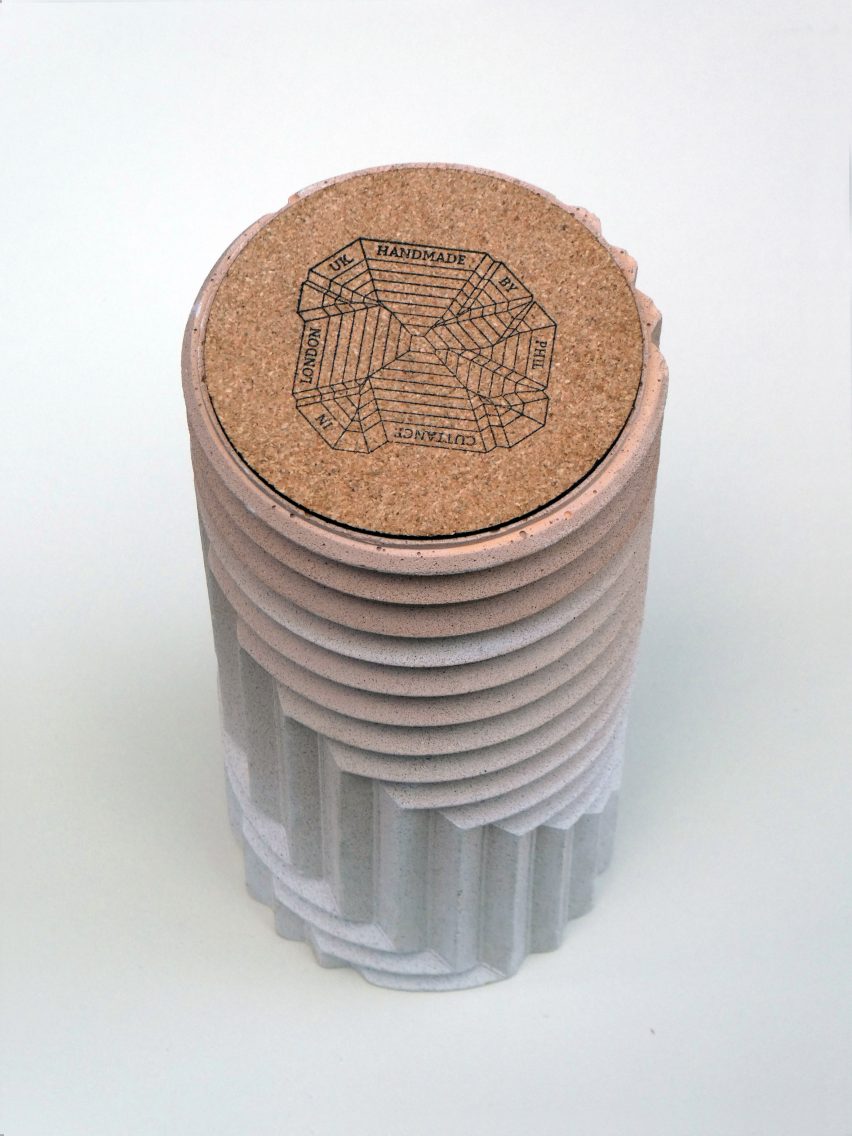
All vases are mounted on a thin cork base – this is to prevent scratching, but also acts as a potter's mark – bearing a geometric stamp design featuring the name of the designer and the location where the piece was made.
The designer previously expanded his range of handmade chevron-textured objects to include a tray, a vase, and a pen pot – also made using Jesmonite.